This post may contain paid links. If you make a purchase through links on our site, we may earn a commission.
Salting steak is an easy trick that's going to change how you cook steak! Armed with my guide for How to Salt Steak, you'll enter a whole new world of tender, flavorful steak in two easy steps!
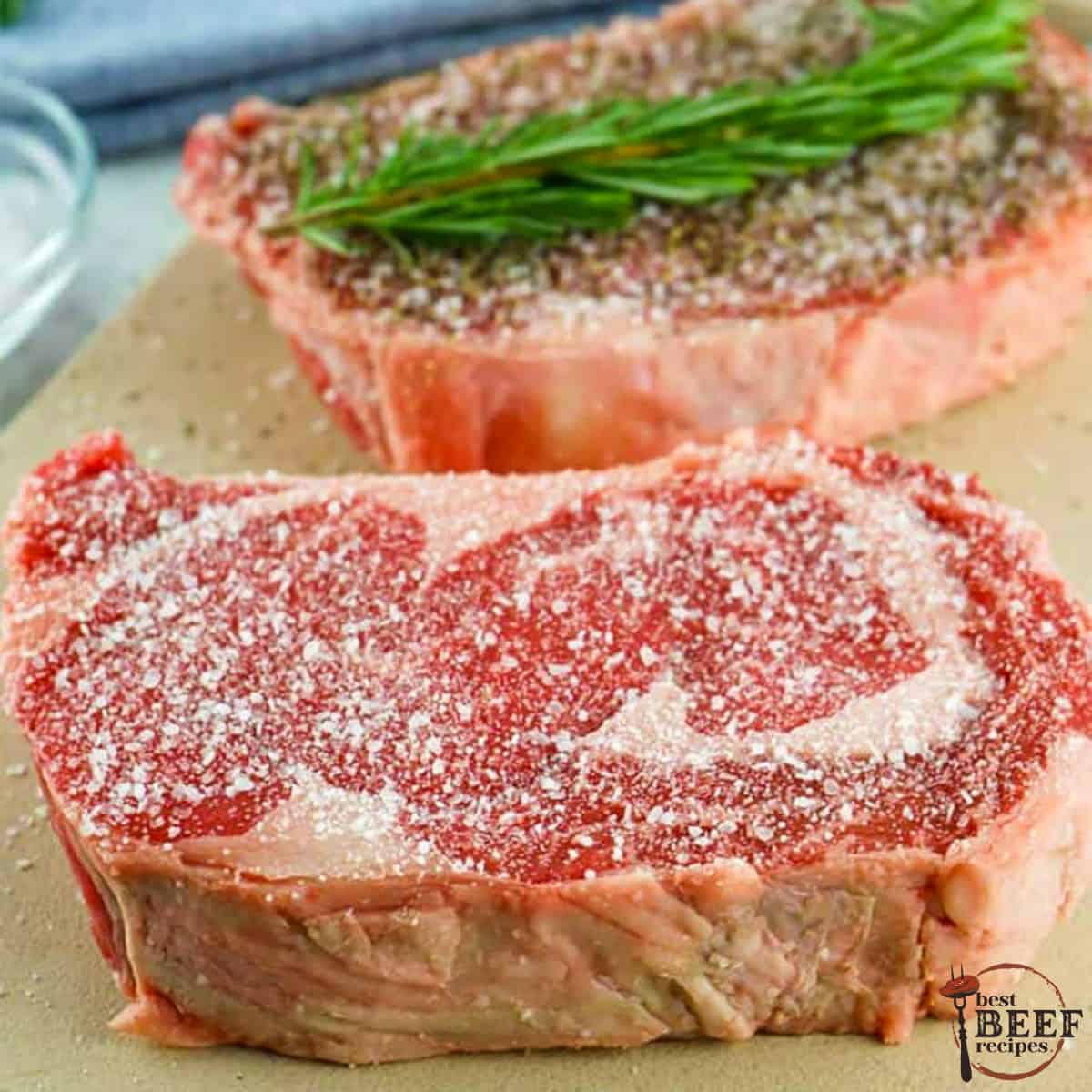
Jump to:
Salted Steak
You may have heard the advice before: "salt steak thoroughly before cooking". But if you're like me, that advice was never quite enough! When do you season it, and how much? Do you let it rest, and how long? What does salting steak even do?
It turns out, those are important questions to ask! How long you let salt rest, what salt you use, when you salt it, and if you should salt it at all make all the difference. By salting the steak with the correct coarse-grain salt and letting it rest for 40+ minutes, you can tenderize steak with no extra work required.
By adding large-grain salt to the outside of the steak, the salt draws out the moisture in the beef. Then, over time, the moisture dissolves the salt and reabsorbs back into the meat, where the salt breaks down proteins and flavors the meat.
Yes, it's that simple! Read on for all the nitty gritty details to make sure your next steak dinner is the best steak you've ever served.
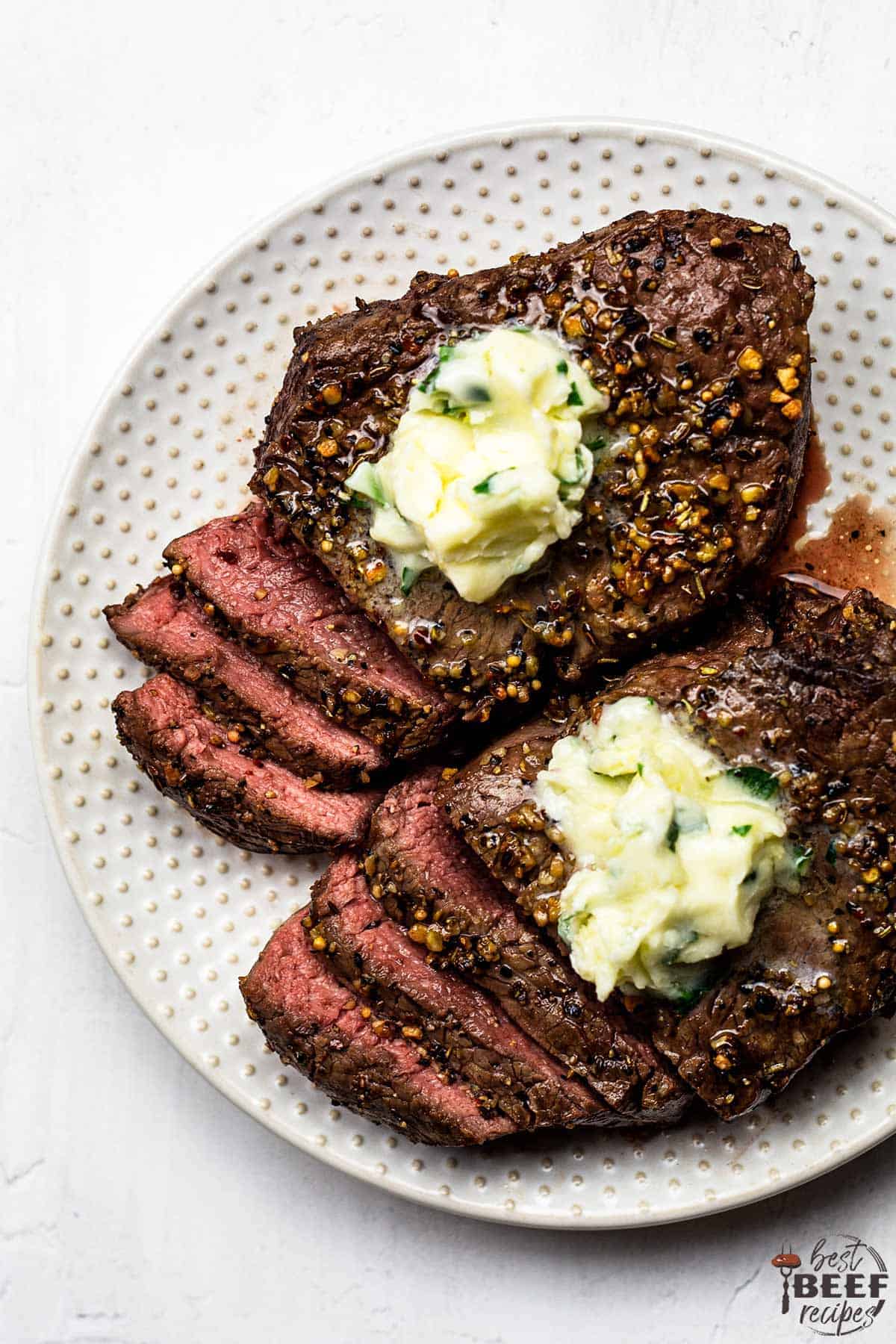
When to Season Steak
When you season steak with salt makes all the difference! Ideally, steak should be salted 24 hours before cooking it- but don't worry if you don't have that kind of time. There are four times that are best for seasoning steak.
- 24 hours before cooking: Salt the steak 24 hours before cooking, then set it in the fridge, uncovered. Remove from the fridge 20 minutes before cooking.
Salting the steak long before cooking it gives it the optimal amount of time to wet-cure, deeply flavoring the entire steak and tenderizing the meat. - 1 hour before cooking: Salt the steak 1 hour to 40 minutes before cooking, then let it rest on the counter until it's ready to be cooked.
This method will not tenderize the meat as much as a 24 hour cure, but it will still add flavor and begin tenderizing the meat, which will enhance the flavor! - Right before cooking: You can still salt the beef right before cooking it, but never let it rest unless it's going to rest for 40+ minutes! If you don't have time to wait, salt the meat directly before placing it on the heat.
- After cooking: If you're not sure of the taste preferences of the people eating, it's okay to salt the meat after it cooks, too. It won't tenderize the meat, but it'll taste nice.
The most important thing to know is to never let salted steak rest for less than 40 minutes.
That's because of what salt does: it draws out the moisture of the steak, then absorbs the moisture back into the meat, now seasoned with salt. Rest it for too short a time, and the beef won't reabsorb the juice, leaving it dry and unsatisfying.
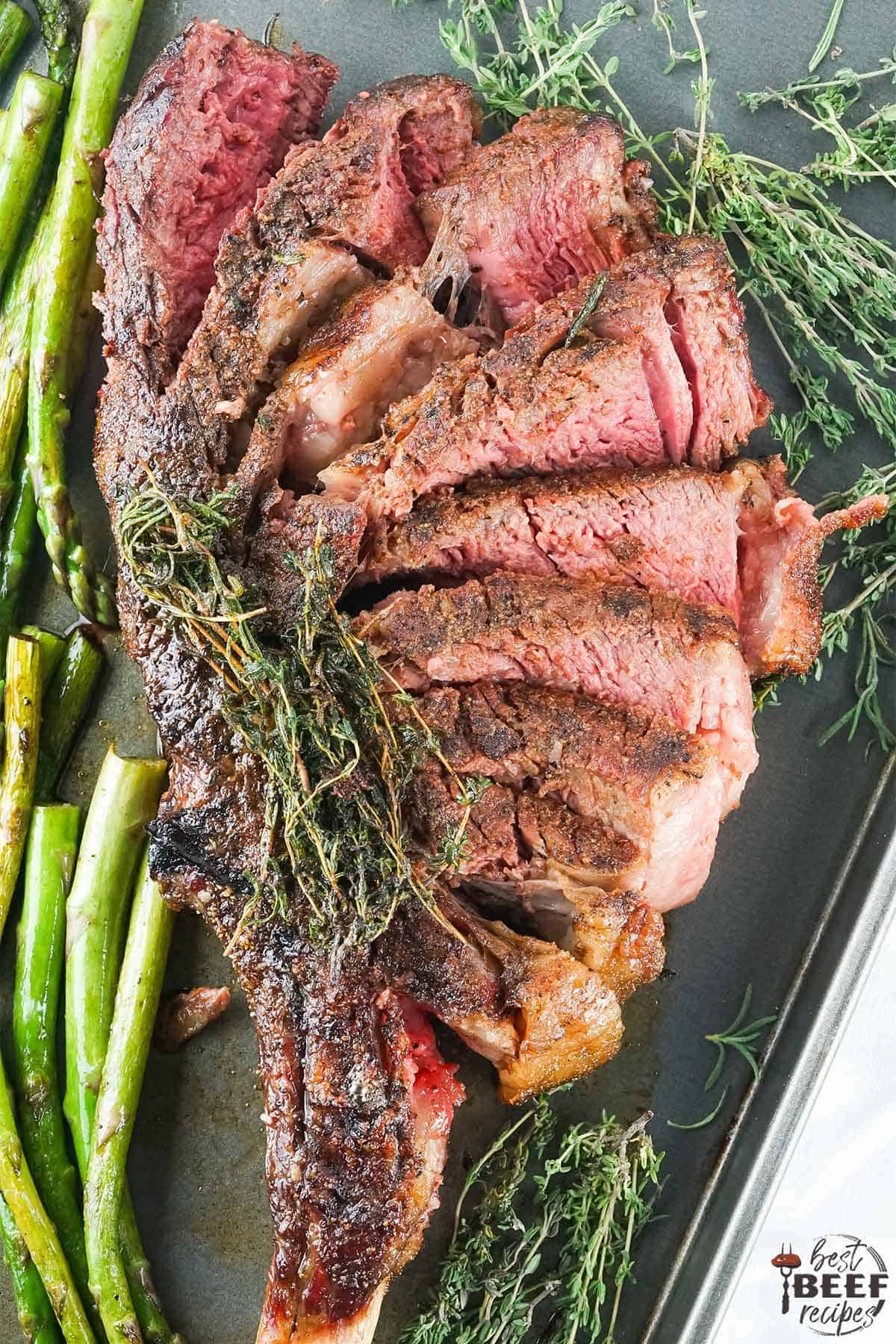
Best Salt for Steak
- Sea salt
- Kosher salt
- Himalayan pink salt
The salt matters for salting steak! Don't use table salt- the grains are so small, they won't properly bind with the steak and will hardly make a difference. Instead, use a quality flake salt like sea salt or kosher salt.
How to Salt Steak
- Starting up to 24 hours before cooking the steak, pour ½ to 1 teaspoon of coarse salt on the steak and pat it into the meat so it's evenly coated on all sides. Let the meat rest in the fridge, uncovered, until 20 minutes before cooking.
- Remove from the fridge and let the steak come to room temperature. You can brush off any excess salt at this point.
- Cook, and enjoy!
Looking for a perfect recipe for salted steak? Scroll to the bottom of the page for my mouthwatering, out-of-this-world tender Pan Seared Steak!
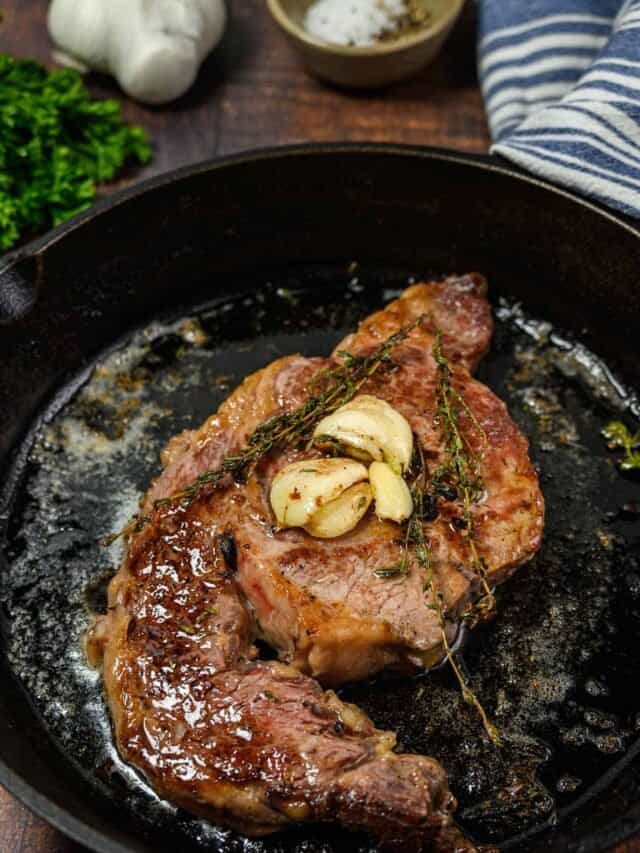
Tips for Salting Beef
- The more fat in a cut, the more salt that should be used! Fat covers up flavor, which is the same reason it makes spicy things less spicy. For steak, that means salting fatty cuts more heavily, and lean ones less.
- Salt liberally, and just tap or wipe off excess salt before cooking. Do not rinse the meat- after resting, most of the salt will have absorbed into the meat itself.
- Salting steak is a fantastic way to tenderize tougher, fattier cuts of meat. For super-lean cuts that are already soft, such as filet mignon, salting isn't necessary.
Salting Meat FAQ
After salting, steaks should be left to rest for anywhere between 24 hours and 40 minutes, but never less. Any less time and the salt will dry out the meat without giving it time to reabsorb the moisture.
Salting steak is an easy way to wet-cure the meat! Salt crystals added to the surface of the meat draw out the beef's moisture, which then proceeds to dissolve the salt. Once dissolved, the moisture is drawn back into the meat over time. Once this happens, the dissolved salt proceeds to start breaking down the tough connective proteins in the beef, tenderizing it and flavoring it from within.
If a steak is going to be resting for 40 minutes, it's safe to leave it out on the counter. That will serve both as effective resting time and also as time for the meat to come to room temperature, which will ensure even cooking and more tender steaks!
Beef Guides and Tips
- Beef Temperature Chart - this chart has got it all! It's an invaluable tool for making sure all your beef cooking adventures turn out perfect every time.
- How to Defrost Ground Beef - if you've ever struggled with defrosting ground beef in time for dinner, struggle no more!
- How Long to Cook Burgers - Burgers can be more difficult than you think, so check out my guide for the perfect burgers, every time!
- How to Grill Steak - your #1 guide for cooking steak on the grill!
- Don't forget to check out my full guide on Tenderizing Steak for more ways to make steak as tender as can be!
- See my guide to Steak Cuts for info on every cut of steak!
- How to Cook Steak in a Pan
- How to Cook Steak in the Oven
- Try my Sauces for Meat Recipes and Beef Seasonings!
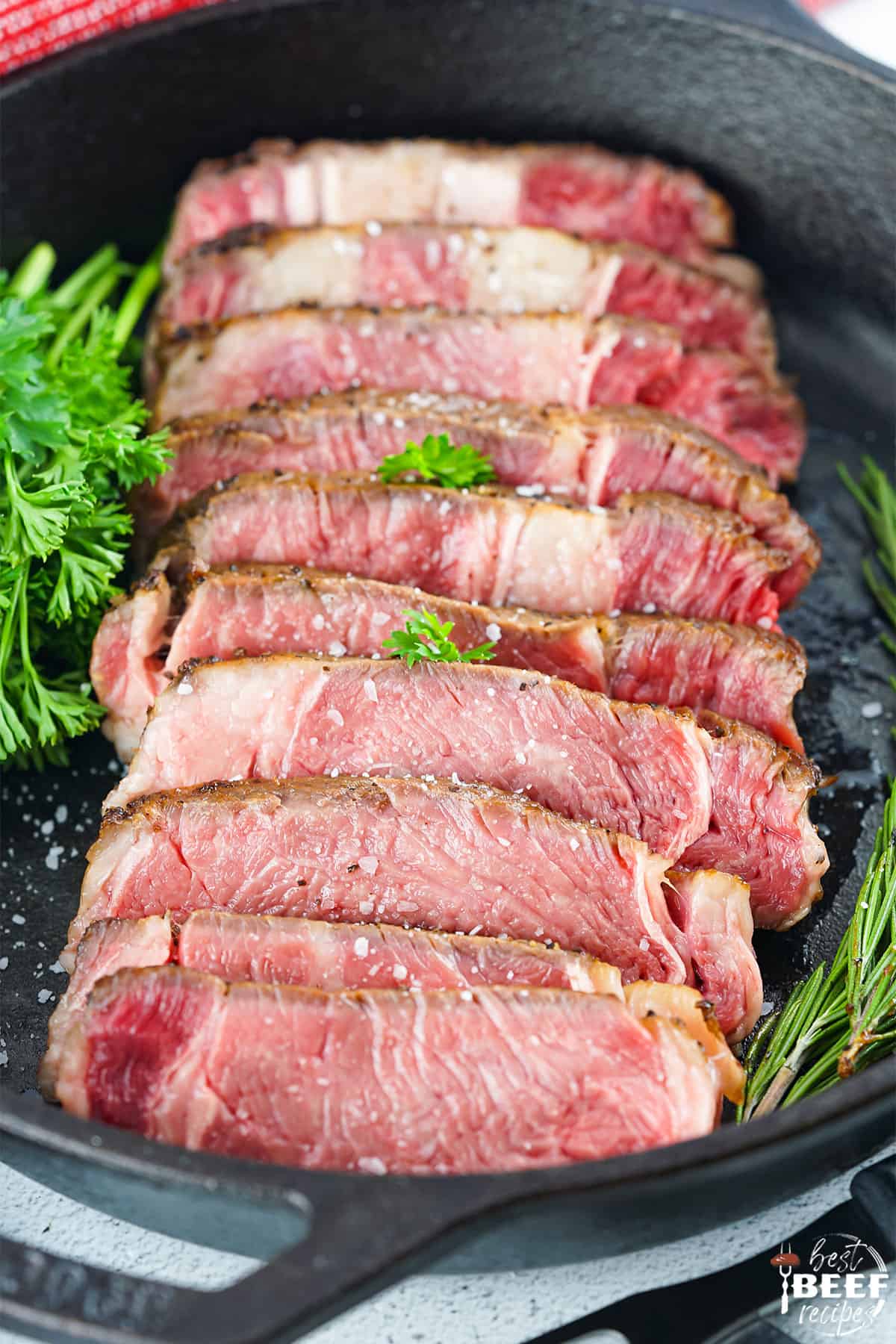
📌 Pin it for later!
Did you enjoy this page? Save it on Pinterest for later!If you enjoyed the recipe, leave a comment and a rating below!
📋 Recipe
Salting Steak
Equipment
- Cast-iron pan
Ingredients
- 1 large thick-cut ribeye steak
- ½ teaspoon coarse kosher salt
- ¼ teaspoon freshly cracked black pepper
- 2 thyme sprigs
- 2 garlic cloves partially crushed
- 4 Tablespoons butter
See our Beef Temperature Chart for helpful tips on cooking any cut of beef!
Instructions
- 40 minutes to 1 day before cooking, salt the steak with ½ teaspoon salt.1 large thick-cut ribeye steak, ½ teaspoon coarse kosher salt
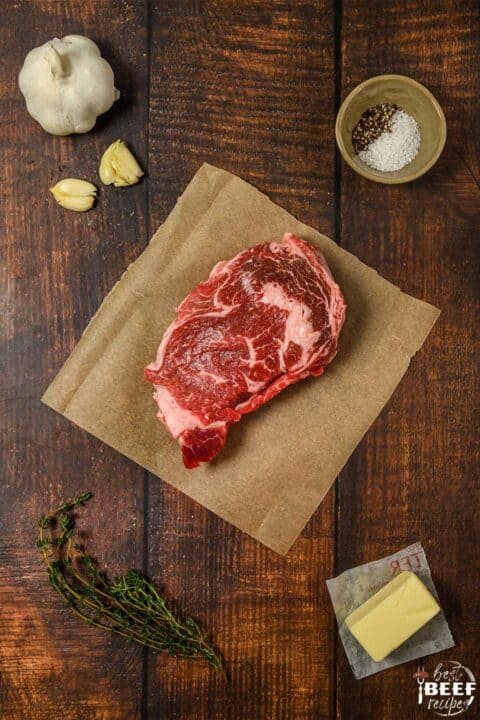
- When ready to cook, season steak with pepper, and preheat your oven to 450°F. While it heats, place a cast iron pan (or other oven-proof pan) into the oven for 5 minutes.¼ teaspoon freshly cracked black pepper
- When the oven is heated, carefully remove skillet using oven mitts and place on the stovetop over medium heat.
- Place ribeye steak in the skillet and sear for 2 minutes on each side. Top the steak with garlic and thyme, and place the skillet back in the oven for 6-7 minutes.2 thyme sprigs, 2 garlic cloves
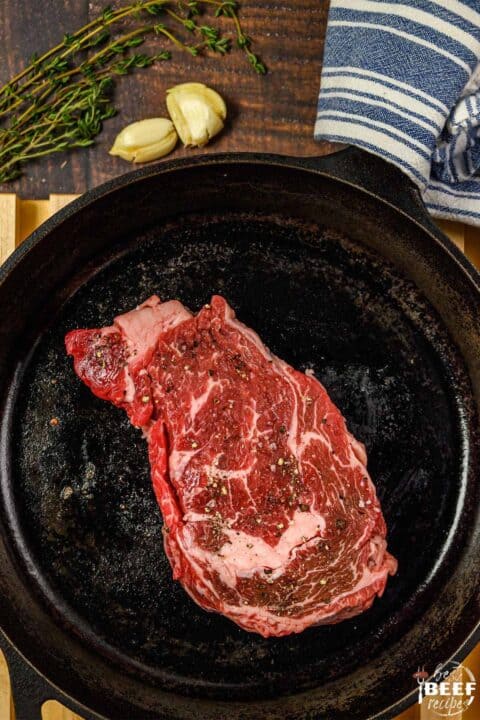
- After 6-7 minutes is up, carefully remove the pan from the oven and place it back on the stovetop over low heat.
- Flip the steak and top with butter. Using pot holders, carefully tilt pan to pour the melted butter, garlic, and thyme over the steak for approximately 3 minutes. Cook to the desired doneness with an instant-read thermometer.4 Tablespoons butter
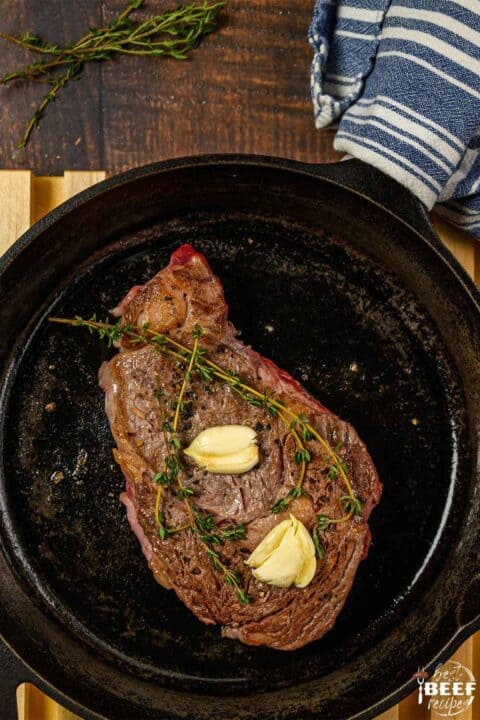
- Allow to rest for at least 10 minutes before slicing and serving. Cut against the grain for best results. Enjoy!
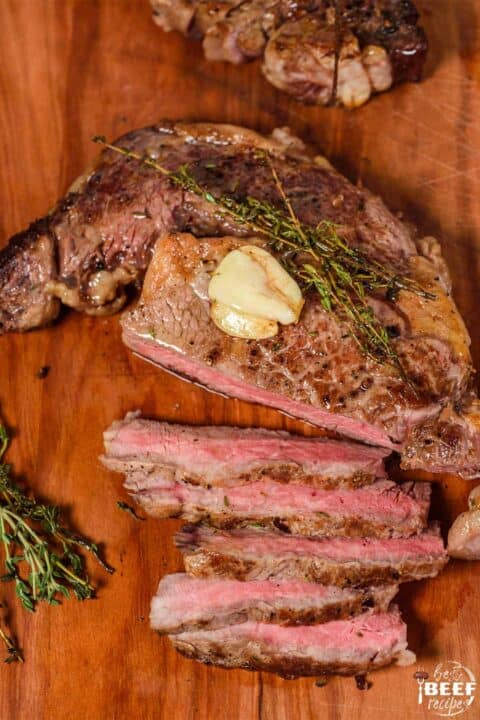
Nutrition
- Grilled Beef Tenderloin - March 14, 2024
- Meatball Seasoning - March 5, 2024
- Burger with Egg - March 5, 2024



Comments
No Comments